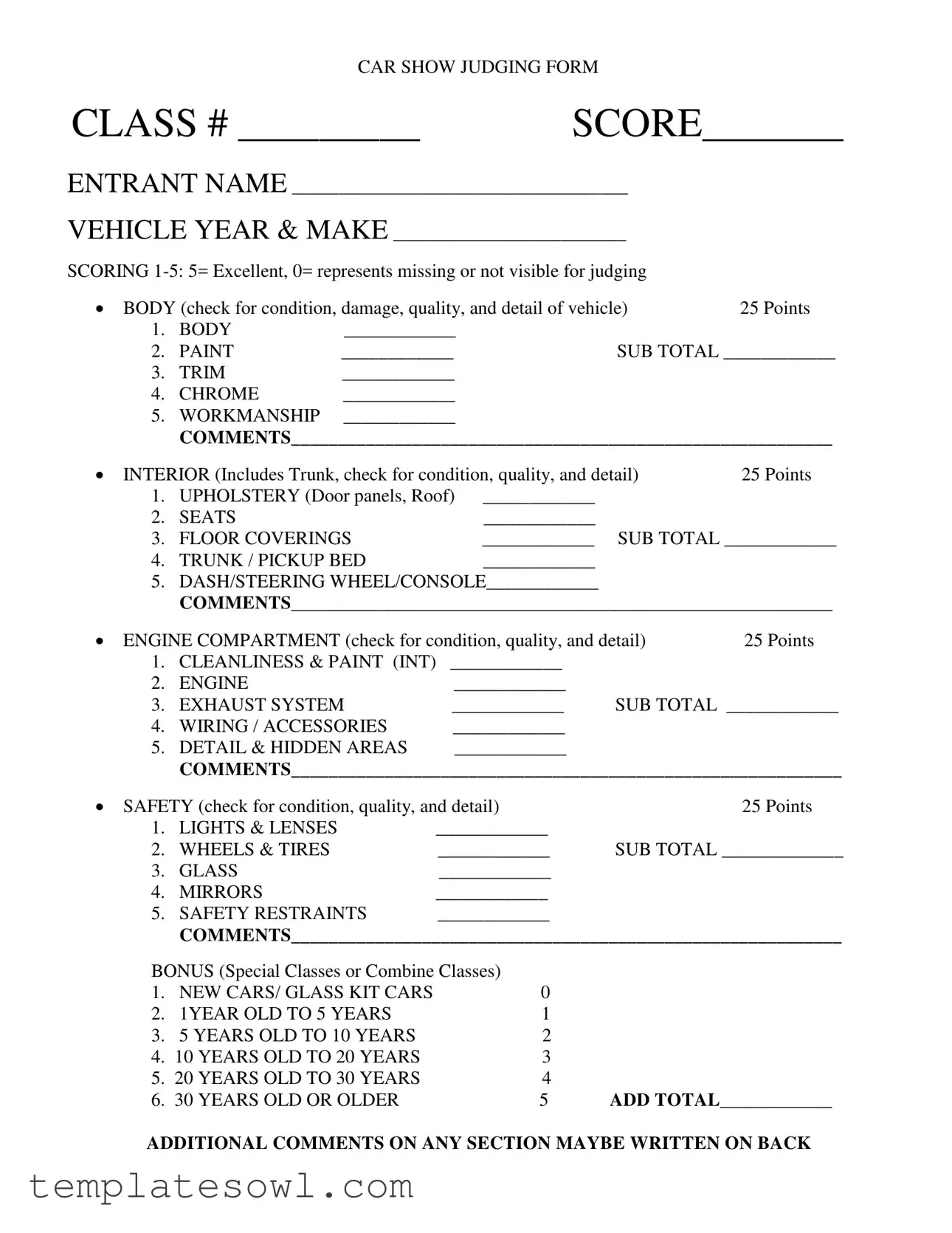What is the purpose of the Car Show Judging Form?
The Car Show Judging Form helps organizers evaluate each vehicle's condition, quality, and detail across various categories. It provides a structured way to score cars based on specific criteria, ensuring a fair and consistent judging process.
How are vehicles scored on the form?
Judges score vehicles on a scale of 0 to 5. A score of 5 means the vehicle is excellent, while a score of 0 indicates an aspect is missing or not visible for judging. Each main area, like body, interior, engine compartment, and safety, can receive up to 25 points, making it important for entrants to present their vehicles well.
What categories are included in the judging process?
The judging is divided into four main categories: Body, Interior, Engine Compartment, and Safety. Each category includes specific criteria to evaluate, like the condition of the paint or the cleanliness of the engine. Judges will also provide comments to give feedback on each section.
Is there a bonus scoring system?
Yes, there is a bonus section for special or combined classes. Vehicles can earn additional points based on their age. For instance, a vehicle that is 30 years or older can receive up to 5 bonus points. This allows unique cars to be recognized for their age and historical significance.
Who fills out this form?
The form should be filled out by judges during the event. They assess each vehicle thoroughly and record their scores and comments directly on the form. This ensures transparency and helps maintain the integrity of the judging process.
Can judges provide comments on the form?
Absolutely! Judges are encouraged to provide comments in each category. This feedback can be invaluable for entrants who want to understand how they can improve their vehicles for future shows. There is also space on the back of the form for additional comments if needed.
What if a section is not applicable or missing?
If a section is not applicable for a vehicle or if an item is missing, judges may score it as 0. This signifies that the particular aspect was not visible for evaluation or does not apply. Ensuring that all components are present can significantly enhance the overall score.
